Gear Mentioned
- Ultimate Direction Fastpack 40 – what I primarily use for my multi-day Fastpacks
- Gear Aid Seam Grip – what I use for repairs and reinforcements
- Sea to Summit Accessory Carabiners – used in conjunction with the Fatpack’s side bungees
- Thermarest Z-Sit Pad – additional back padding
- Thermarest Neoair Xtherm – part of my sleep system
My gear goes through some tough challenges with me, and I often find myself modifying it to better fit my needs to survive my adventures. My Ultimate Direction Fastpack 40 is no different. Here are some changes I’ve made to my pack:
Patched and Reinforced Back Pocket
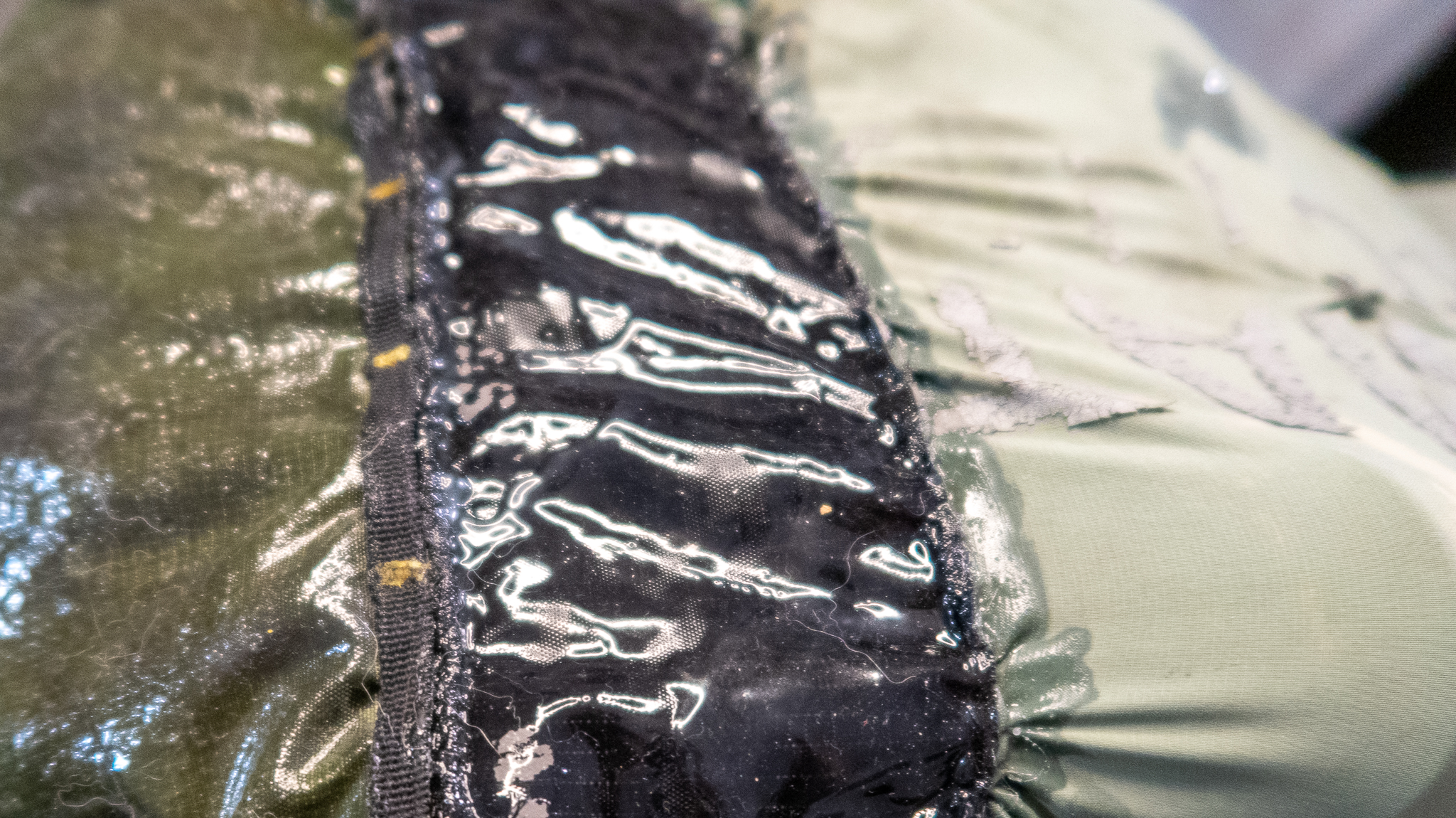
Scrambling is not friendly to the stretchy material used for the back and side mesh pockets, and I often develop holes in them. These can be stitched closed, but I managed to essentially rip the entire bottom of the back pocket, which couldn’t be simply sewn shut. So instead, I used a rectangle of fabric to reinforce the bottom of the back pocket. I then applied a few thin layers of Gear Aid Seam Grip to add more durability.
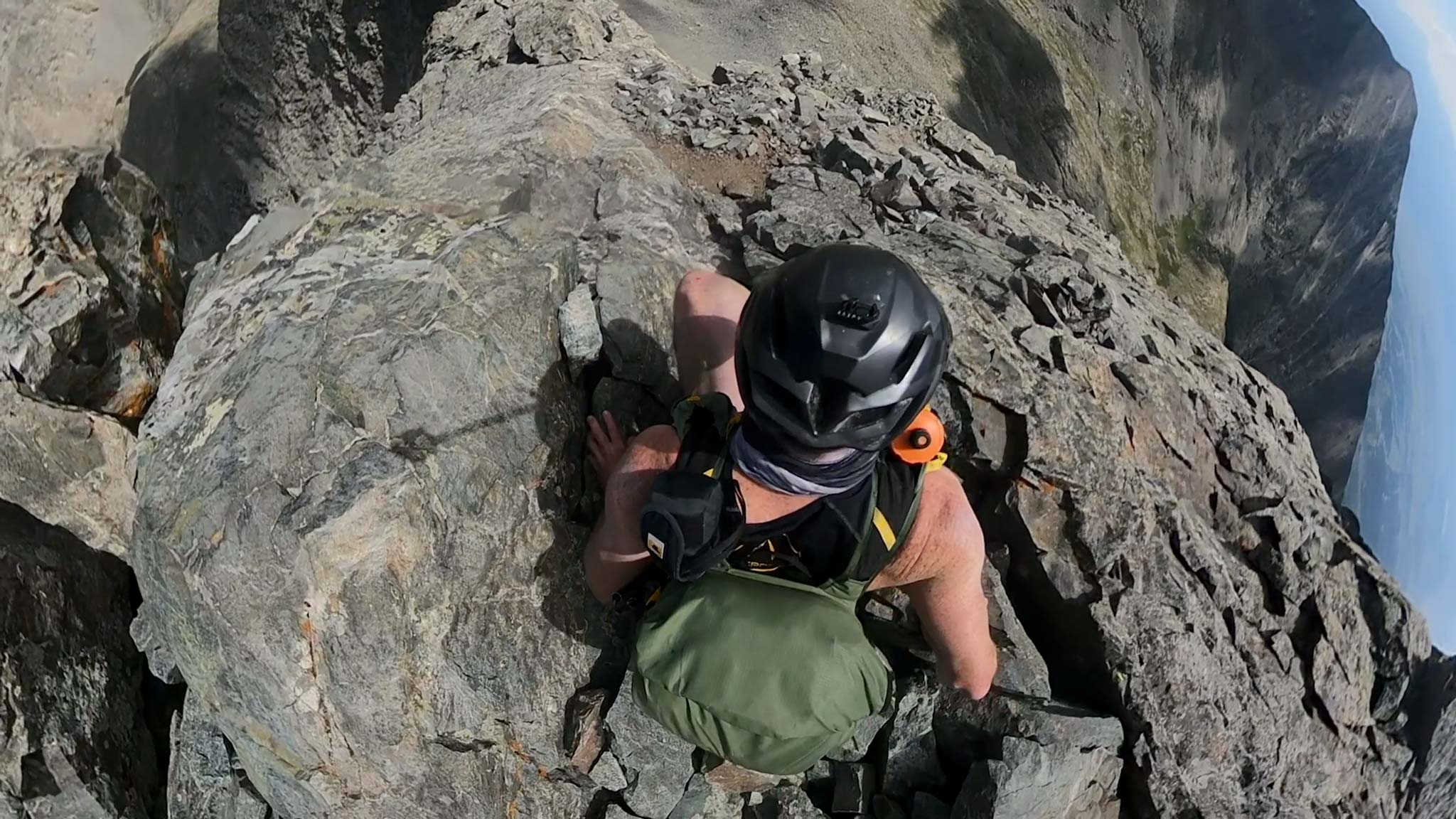
Reinforced Bottom Panel
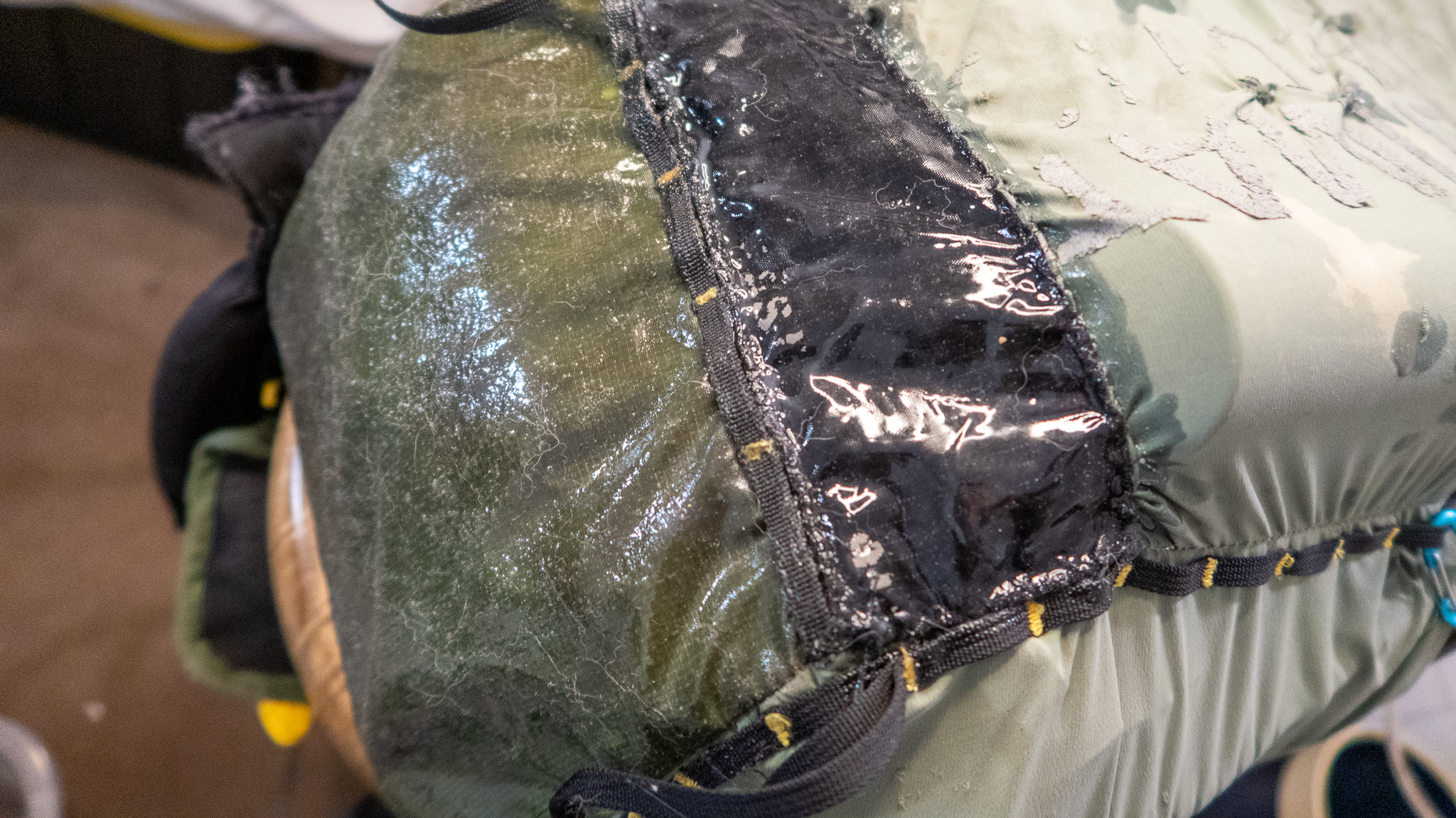
Fabric used on the bottom panel of the Ultimate Direction Fastpack 40 is tough, but after all the miles on nothing but talus, it’s starting to show wear. Applying a few thin layers of Gear Aid Seam Grip to the bottom revives its durability and stop problems before they’ve started.
Mini Carabiners to Enhance the Side Bungee Chords
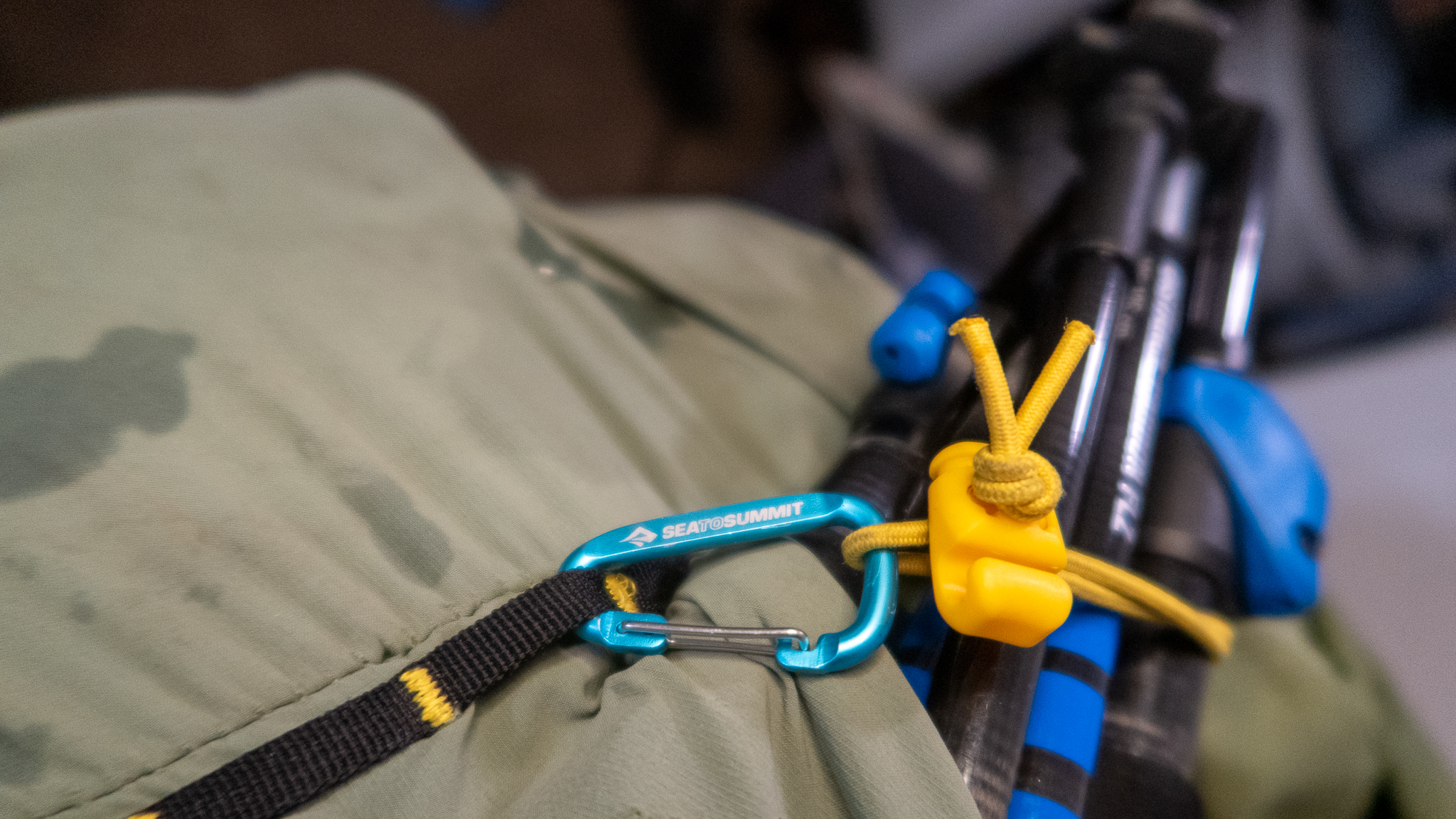
The bungee chords above the side pockets are useful to secure items like trekking poles so they don’t fall out of the side pockets. I do find them hard to attach to the daisy chain webbing using the provided hooks. So, I bring along a few mini carabiners like you can find sold by Sea to Summit to make it a little easier. I’ll bring a few of these carabiners with me, as they can also attach to things like tabs on clothing, so I know if I stuff something like my puffy jacket in a side pocket, it’s guaranteed to be there until I need it again.
Hip Belt

The Fastpack 40 isn’t really designed to work with an honest hip belt, as the pack itself rides pretty high up the back. But, there are times where I wish I had a hip belt – mostly at the start of a longer trip (6+ days), where the weight of my pack from all the food I’ve brought gets heavy on my shoulders. I’ve been experimenting with putting my own hip belt on, by using an old hip belt I’ve salvaged from a different old pack, and attaching it to the Fastpack 40.
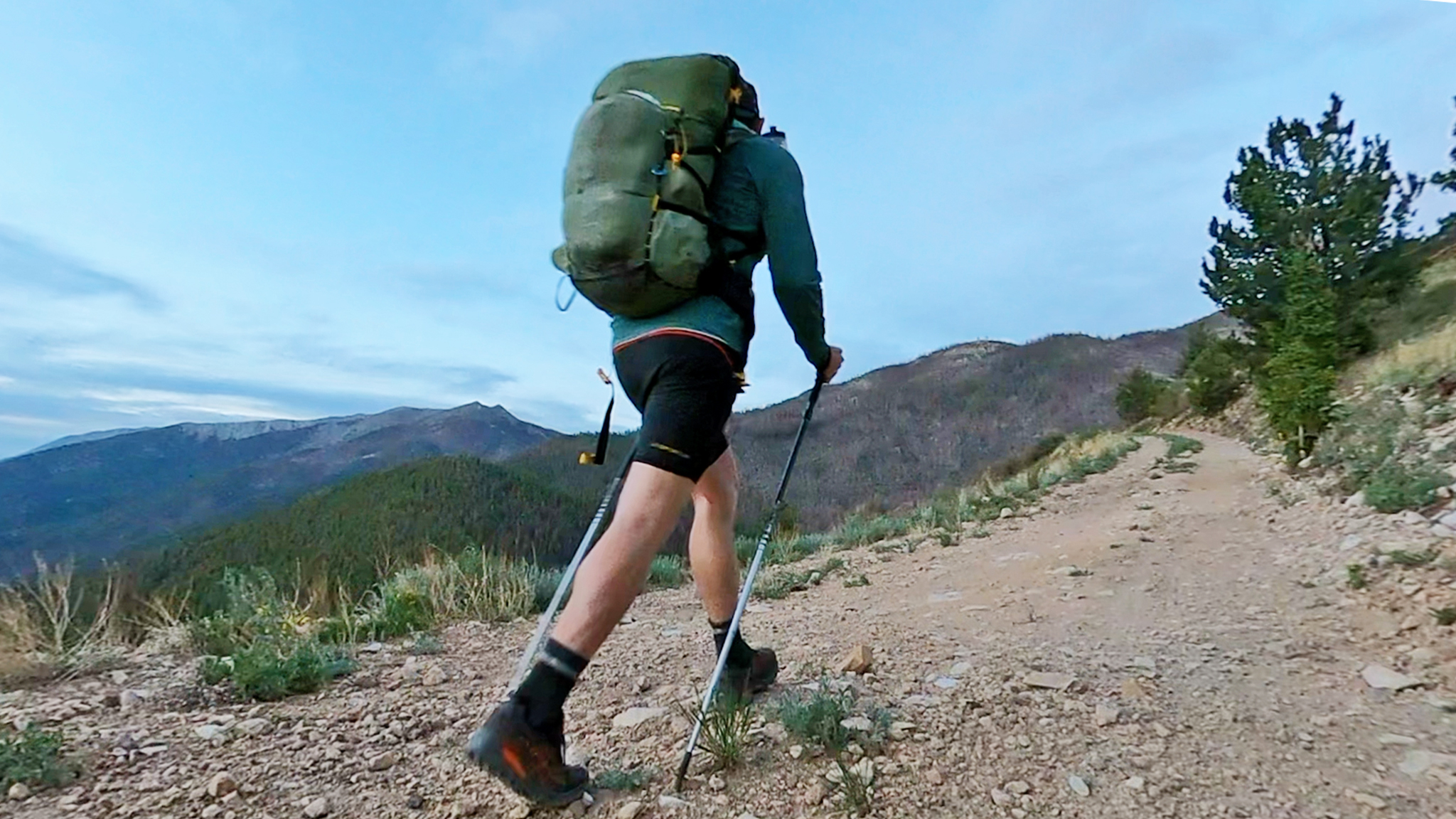
This is actually fairly easy to do, as a line of daisy chained webbing is located on the side of the pack to attach things to the pack, without permanently altering the pack itself. I simply used zip ties to crudely attach the hip bet to the pack to get an idea on how well this idea will work. I have to admit the additional support is marginal, but it does make a difference, enough where I may continue experimenting with ways to make this work better.
Internal Closed Cell Foam Padding
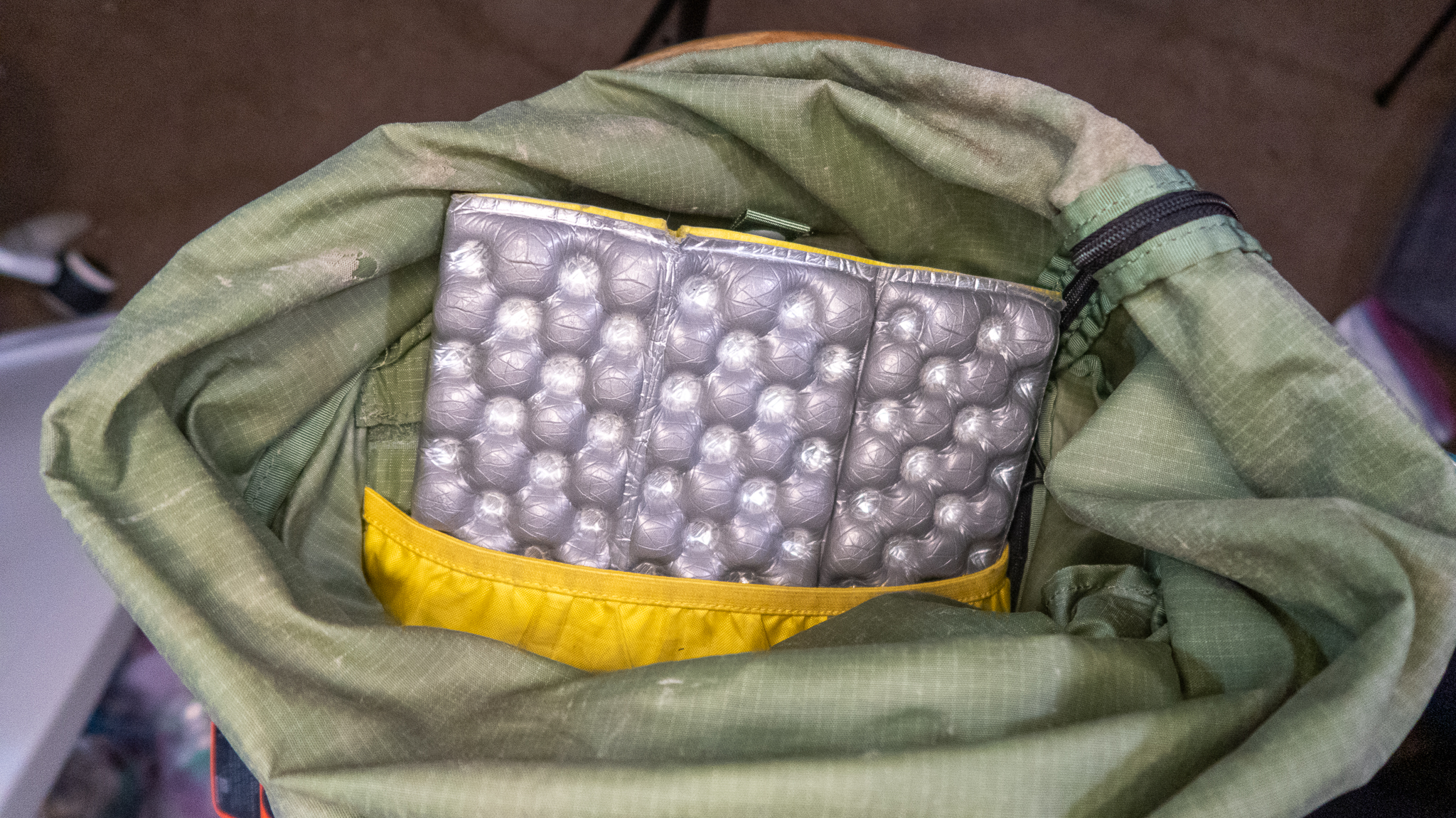
The padding in the Fastpack 40 is minimal, and often the contents I have in it can have sharp edges (think electronics). I’ve found using a square closed cell foam sit pad when folded in half fits perfectly in the water flask pocket in the back interior of the fastpack. I never use this pocket for a flask and I bring along the sit pad anyways for trips like the Sangres Traverses, where you go for days without an opportunity to sit on anything except talus. I also have cut down my blow up sleeping pad (a Thermarest NeoAir Xtherm) to only cover me from my head to my butt, so I use this sit pad as something for my feet to rest on, when sleeping.
